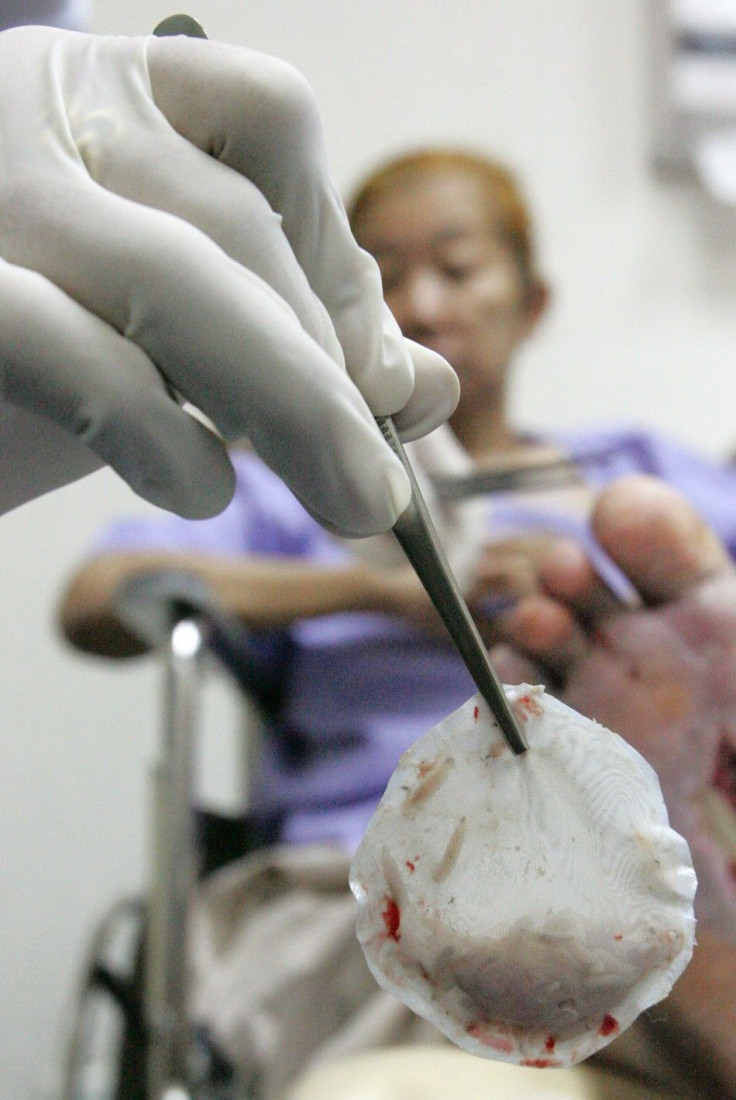Maggots In Wounds: Are Medical Maggots The Best Way To Clean A Wound? [VIDEO]

Need a way to clean a wound that is having difficulty healing? Believe it or not, maggots may be the answer.
A maggot is the larva of an insect and for most people is associated with death. According to the Los Angeles Times, maggots eat at dead (necrotic) tissue. While doctors are generally needed to remove dead tissue, the maggot can do the same thing and a lot less painfully. Doctors generally scrape out the dead tissue, and sometimes may not remove all of it. Maggots eat away at the dead tissue, and also ignore the healthy tissue which is important for healing.
Any old maggot won't do the trick. Medicinal maggots are specially prepared for human therapeutic purposes, says a statement on Health Canada. These maggots are raised by companies in a controlled environment, and not found in nature. In order to digest the dead tissue, the medicinal maggots secrete an enzyme.
I call them micro surgeons, Dr. Edgar Maeyens Jr. of Oregon told National Georgraphic. They can do what we can't do with scalpels and lasers.
In the 1930's, maggot debridement therapy was a routine treatment for helping bone and soft-tissue infections. Maggot treatment went out of style with new antibiotics, but the treatment is coming back in style. On June 28, 2004, the Food and Drug Administration (FDA) cleared for the first time the commercial marketing of leaches for medicinal purposes.
How does it work?
Five to ten of the specially prepared medicinal maggots are placed on each square centimeter of the wound, reports National Geographic. A bandage is applied that allows the wound to be protected, but the maggots still allowed to breath. The medicinal maggots stay on for between 48 and 72 hours. During this time they dissolve the dead tissue of the wound. According to National Geographic, this is done by the maggots secreting digestive juices and then ingesting the liquefied tissue and bacteria. While eating the dead tissue the maggots grow in size from about 0.08 inches to almost 0.4 inches.
What wounds can be treated with maggots?
According to Dr. Ronald Sherman of the University of California at Irvine, a conventional medical or surgical therapy should be tried first. Dr. Sherman told National Geographic that maggot therapy should be considered for non-healing wounds, especially those which are infected or contain dead tissue.
Aetna insurance medically covers maggot treatment for neuropathic foot ulcers, non-healing traumatic or post-surgical wounds, pressure ulcers or venous stasis ulcers. The insurance company considers medicinal maggots as experimental though and under investigation due to insufficient evidence of its safety and effectiveness.
Medicinal maggots are regulated by the FDA and are prescription only. Maggots must be obtained from an appropriately licensed health care provider with a valid prescription.
Does this use of maggots sound familiar? The 2000 film Gladiator depicted Russell Crowe's character being treated by maggots.
© Copyright IBTimes 2024. All rights reserved.






















